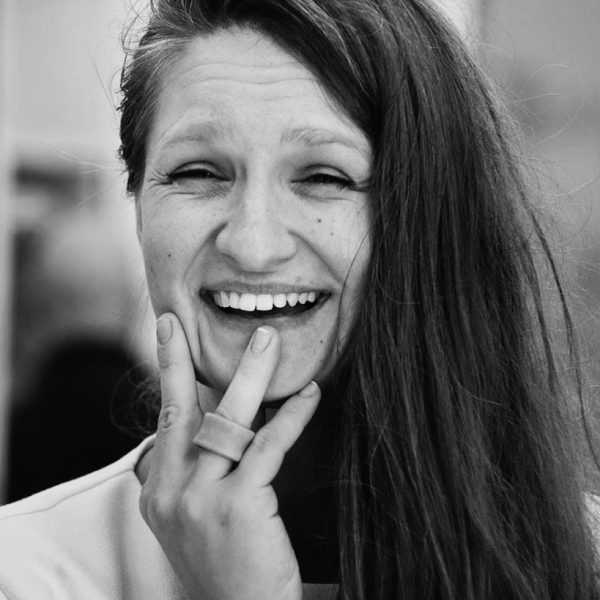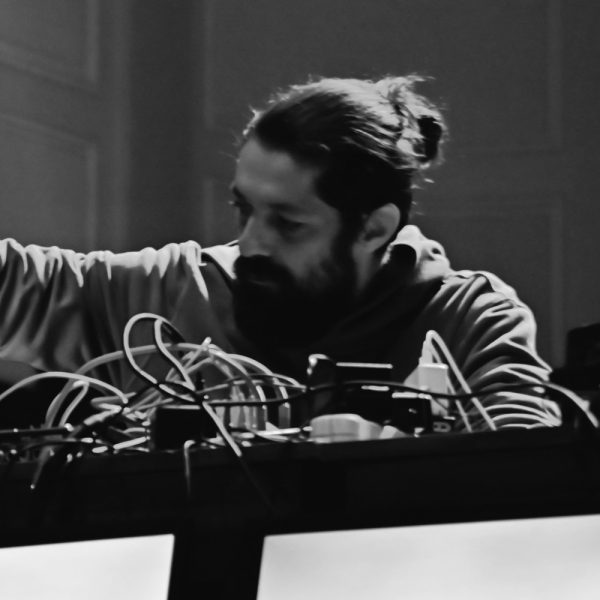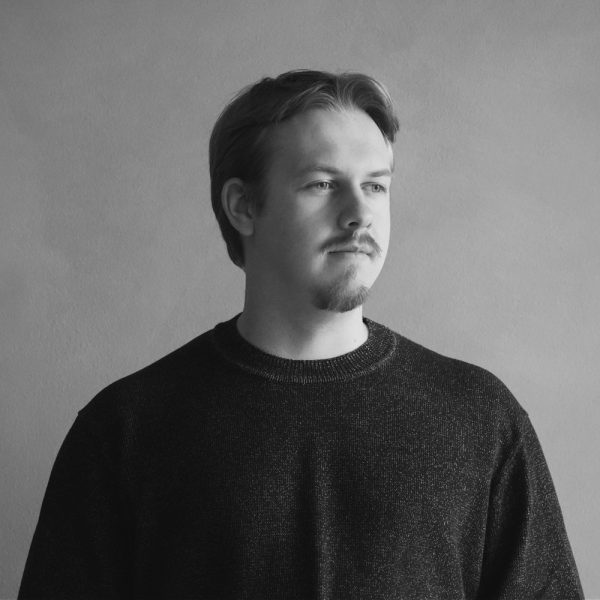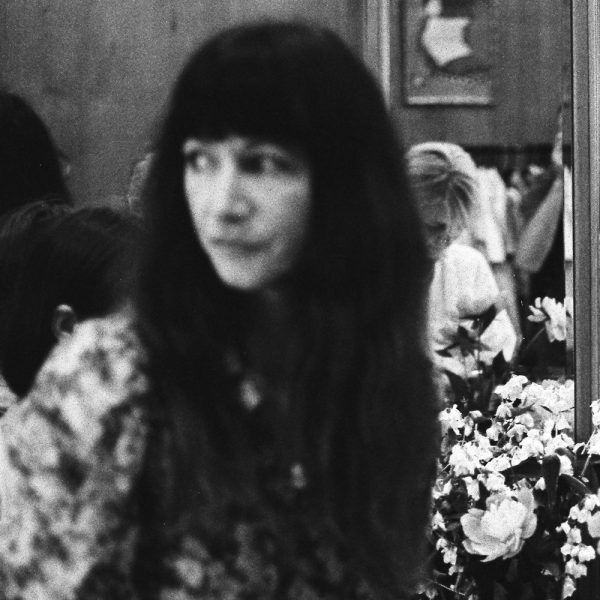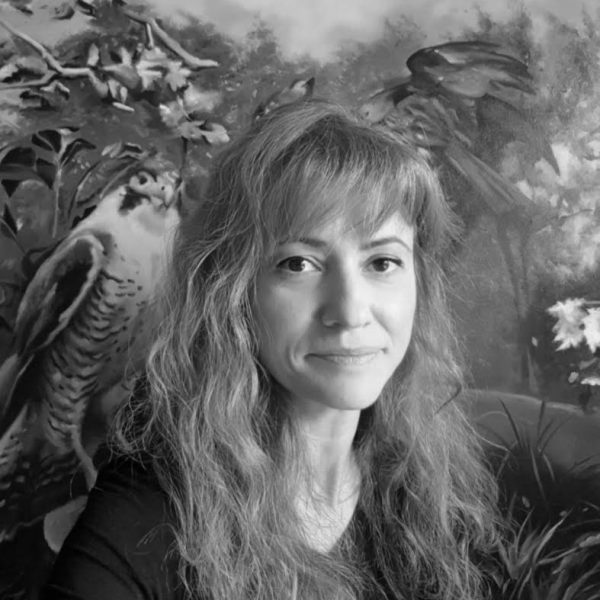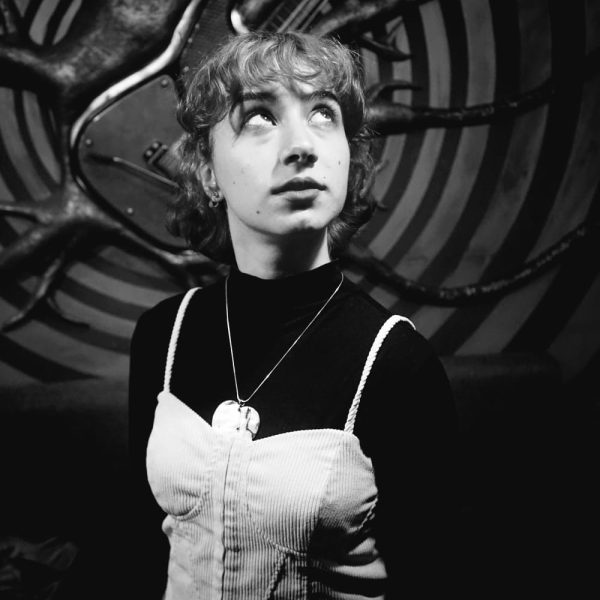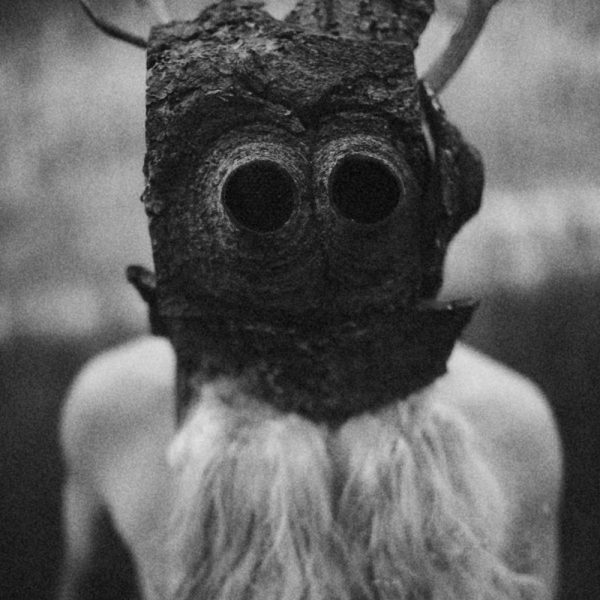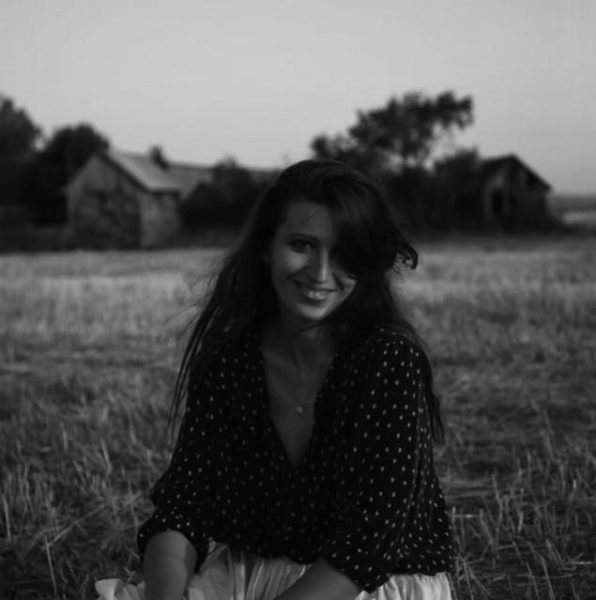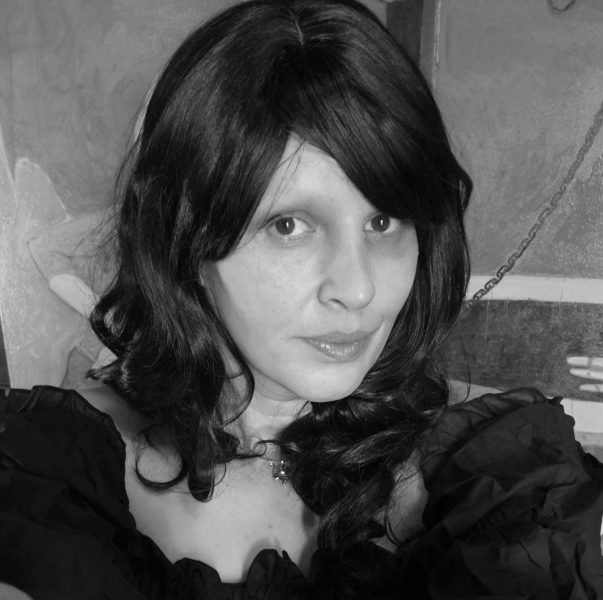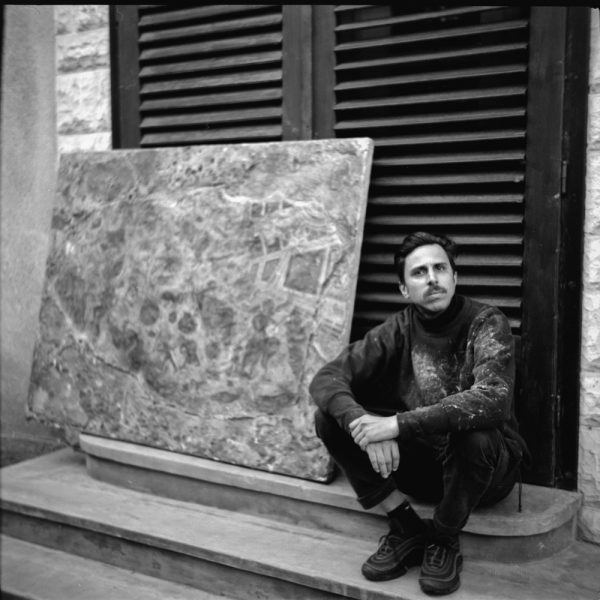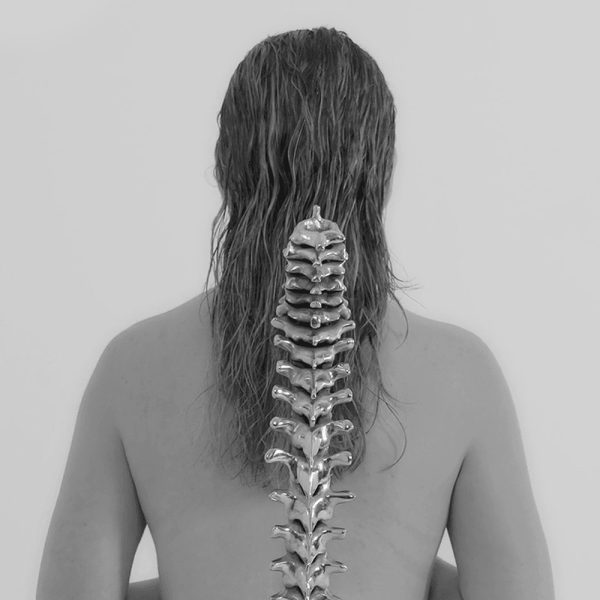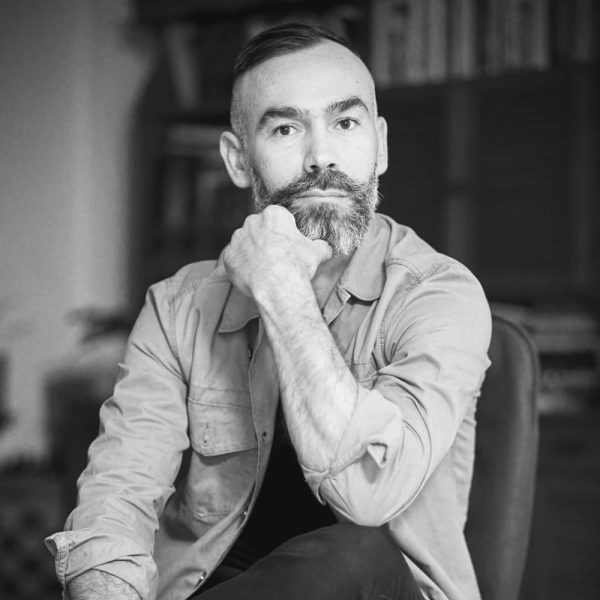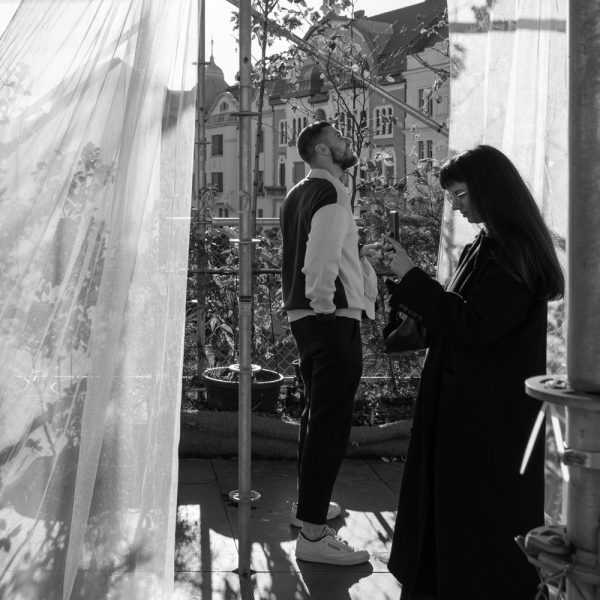Acces liber
2025
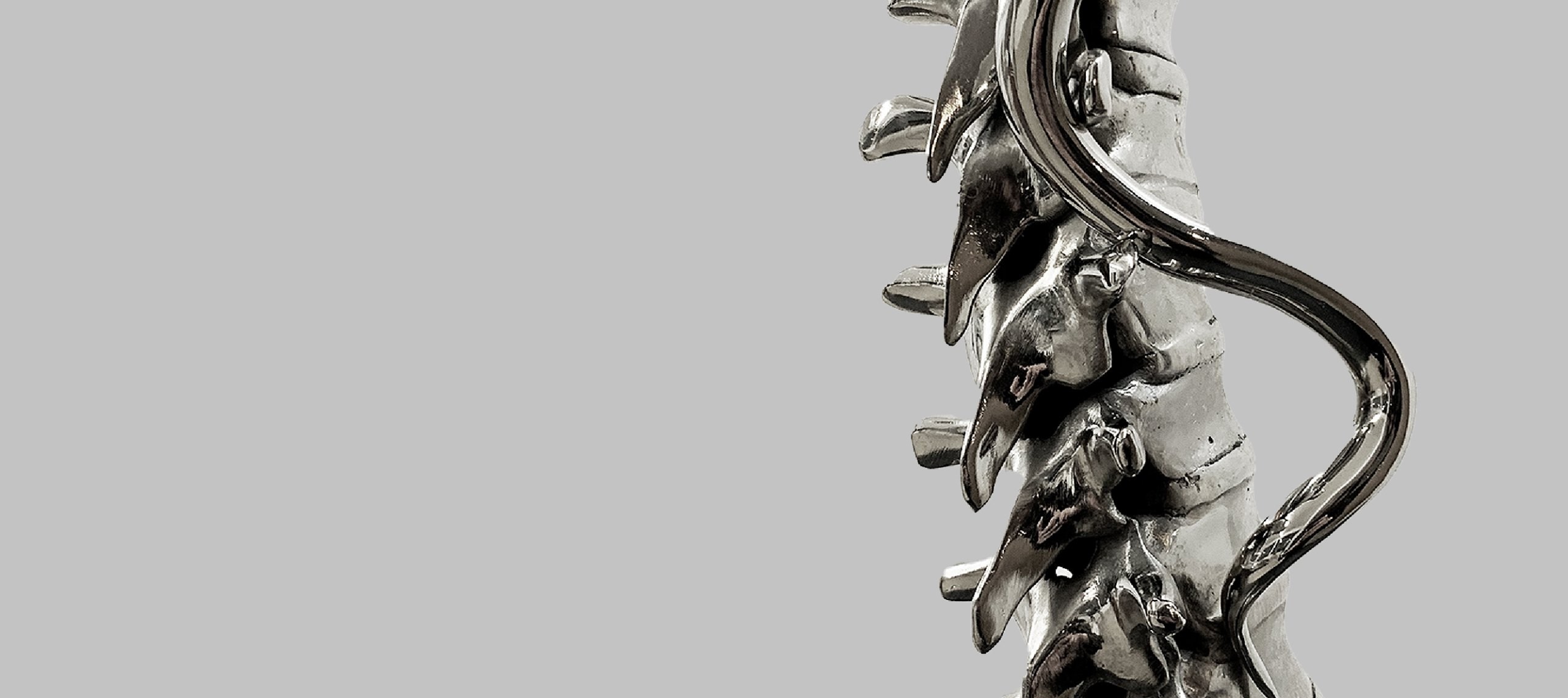
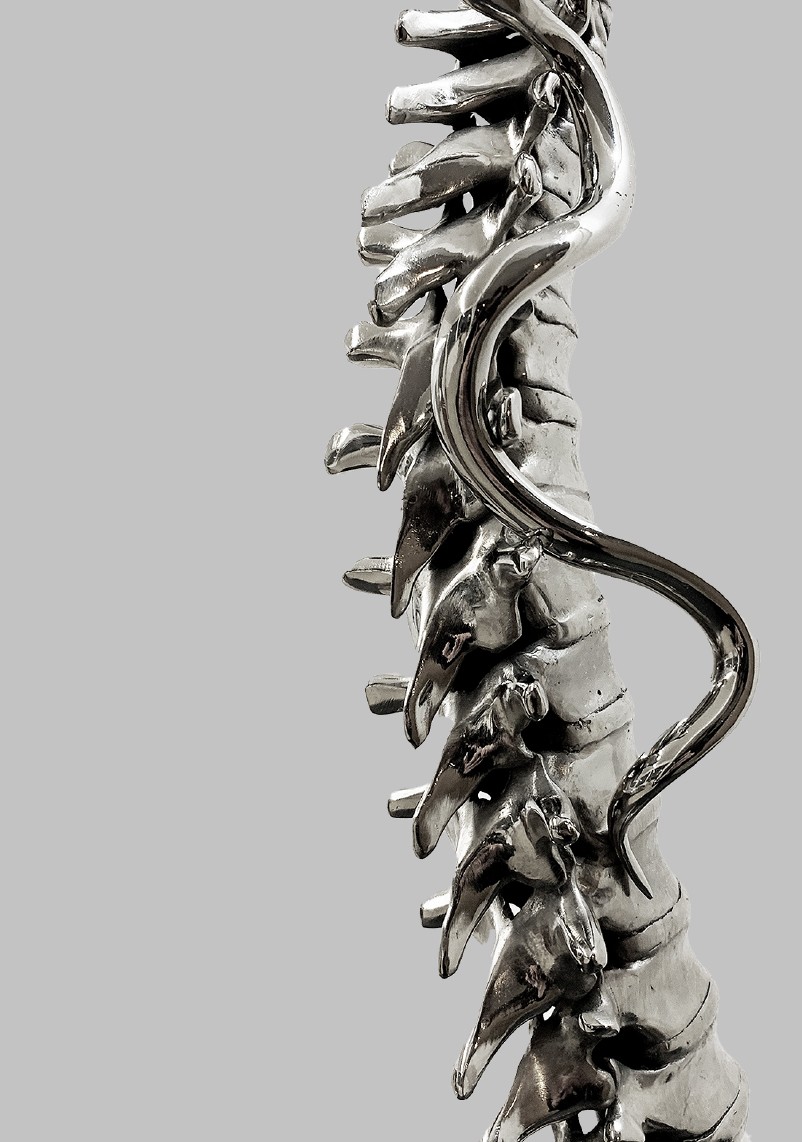
Concept: Marlene Herberth for RCW 2025
To rediscover what it means to be human, we must first dare to unlearn. Noli Sapere (Dare to Know Nothing) challenges the supremacy of reason and mastery, urging us to embrace the unknown within ourselves. Originally used in the First Book of Letters (20 BC), by the Roman poet Horace, the phrase Sapere aude became associated with the Age of Enlightenment, during the 17th and 18th centuries, after Immanuel Kant used it in the essay “Answering the Question: What Is Enlightenment?” (1784). The title subverts the Enlightenment motto Sapere Aude (“Dare to Know”), which called for the courageous pursuit of knowledge and reason. By flipping this mantra, the exhibition questions whether the relentless quest for control and certainty has led us astray. What if unknowing—the embrace of doubt, intuition, and vulnerability—is the key to shaping a more holistic future?
At a time when technological progress outpaces emotional and spiritual depth, Noli Sapere explores hidden resources within the unseen—our souls, emotions, and collective consciousness—and their role in crafting a future beyond the limitations of the past. Inspired by futurologists like Gerd Leonhard, the exhibition envisions alternative scenarios for a “RE-Renaissance,” integrating the physical, emotional, and spiritual dimensions of humanity into a speculative vision of renewal.
The exhibition unfolds across interwoven themes that bridge the tangible and the intangible. The Renaissance Within is about rewriting the ideals of the Renaissance for a fractured present, challenging the Enlightenment’s legacy of mastery and knowledge as power. Instead, it proposes narratives of unlearning, vulnerability, and collective awareness as pathways to a more holistic future. The Soul as Dimension unveals how beneath the surface lies an untapped well of emotional and spiritual intelligence. This section explores the soul, emotions, and unseen energies as vital counterbalances to humanity’s rational pursuits. These works illuminate the immaterial as a resource for renewal. Ultimately, we look at the Body as Artifact, as a vessel of memory and reinvention. Through its vulnerabilities and transformations, the works in this section reveal the body as both archive and blueprint for the future, asking: how do we reconstruct what we thought we understood?
Noli Sapere explores present mind- and soul-sets, using the Renaissance’s focus on the body and soul as a foundation while expanding into speculative futurism. Through a range of artistic practices—painting, sculpture, installation, live acts and immersive media—the exhibition constructs an alternative framework for understanding humanity’s next chapter.
By daring to know nothing, we can confront the limits of reason and mastery, opening ourselves to a deeper, more intuitive understanding of what it means to be human. Noli Sapere suggests that in unknowing, there is power, and in surrendering control, humanity may rediscover its greatest resources—those rooted in connection, emotion, and the soul.
1. DSLX (RO) SOUNDTRACK FOR IMPRISONED PLANTS TO RIOT TO (2023, megaphone and sound composition,
[0.sp(q)ark [extended_for_plants_to_riot_to_(2023)]
Nature is violent; it is neither good nor bad; nature just is; it is time to accept that; the solution for any environmental action lies not in shaming people who do not take action; for they themselves are part of the solution; not in microgroups of pseudo-colonies blinded by pseudo-causes; but in getting more people to enjoy the beauty that lies in nature; even in its violence; getting in tune with nature is a choice, not a responsibility; some trees need to be cut down for others to prevail; some species need to gracefully expire and become nutrient for others; matter is finite; and in constant movement; understand that, accept that, and make good use of the few moments of beauty and blossom that nature offers; fragments; snapshots; unique; for they are also the result of violent acts themselves; a glimpse; any spike that follows the post-germinatory state on its journey towards its own expiration.
2. Robert Catrina (RO) MAC: INNER GARDEN (2023, brass, marble, 55x40x40 cm)
This piece evokes the emotional and ever-evolving landscape within us—our inner garden. The brass legs, masterfully crafted by Alexandru Ranga, twist and flow like organic stems reaching for light, embodying a process of continuous unfolding. Their fluid forms contrast with the solidity of the marble top, which appears stable yet subtly fractured, reflecting the tension between knowledge and uncertainty, between what we think we understand and what remains elusive.
At the heart of this composition, the poppy symbolises peace but also holds the delicate balance between containment and transformation. Emerging from its bud, the poppy carries the tension of growth, the quiet resistance before release, much like the evolving nature of perception itself. The bees, silent agents of polination and constant change, of life itself, speak to the unseen forces that shape our inner worlds.
Through the dialogue between materiality and form, Inner Garden becomes an invitation to explore the landscapes we cultivate within ourselves—ever-growing, ever-changing.
What does your inner garden look like when you allow it to grow beyond certainty?
3. Flavia Pitiș (RO) GUIDING LIGHT (2023, oil on linen, 95×125 cm)
“Can you tell me where to go?”
“It depends on where you want to end up.”
“I’m not really sure…”
“Then it doesn’t matter which path you take.” Alice in Wonderland, by Lewis Carroll
In a world that seeks absolute answers, can we follow the Cheshire Cat’s guidance? Lose our rational control and gain trust in a direction that will reveal itself along the way?
If we don’t know where we’re going, do we still get there? But what if we know where we’re going, and we end up somewhere else? Or if we know where we’re going, but we don’t know the way? And if we know where we’re going, do we realize when we’ve arrived? And when was the last time we wandered off track, leading us to a destination we didn’t even know we were looking for? And if we don’t know where we’re going, is it a failure, or just a walk without a map through an unplanned dream? If we received a clear sign of what to do next, would we trust it, or would we ask for another one, and another, just to be sure?
How much of the logic of dreams, where everything is accepted and the impossible is possible, have we already incorporated into our lives?
4. Ileana Sebe (RO), EMOȚIONAR, A COLLECTION OF EMOTIONS (2025, installation, porcelain, nature, plastic, etc.)
Just as there is a Herbarium to collect and catalog plants and flowers, or an Alphabet Book to teach us letters and word formation, Emoționar can be seen as an encyclopedia of the soul—an intimate collection of emotions.
At the heart of this installation there is a collection of porcelain lids gathered over time from flea markets. Each comes from an object that was once part of someone’s life—a teapot, a vessel, a box, a soup tureen. Now, the lids become gateways to emotions. On the table, they wait to be lifted, inviting people to feel.
A small object hides under each lid, filled with meaning. It could be something fragile that evokes nostalgia; or it is an unexpected item that stirs up fear.
Emoționar is also about allowing yourself to be surprised, staying present, being in touch, and observing the first feeling that arises from a new experience.
Ileana Sebe (RO), ALL THE PEOPLE IN ME WERE ONCE CHILDREN (2024, Installation, textile, plastic,)
Inspired by my personal development work and, more recently, by my participation in family constellations, I made this installation by hand-stitching miniature figurines onto a dress.
We perceive people through our own system—and by “system,” I mean our body with all its receptors. It is something so obvious, yet at the same time, so difficult to truly grasp. The outside world is merely a perception of each person’s inner world.
We are the receptors of all the information around us, and we perceive others in a unique and subjective way.
This truth is both touching and overwhelming. That is what I felt as I sewed these figurines, thinking about many of the people I have encountered over time.
This installation is part of a therapeutic process. As I stitched the figurines, I connected with many people I know and imagined them as small children. Over time, these individuals were no longer separate beings—they merged, and I felt a deep connection with life itself.
5. Hortensia Mi Kafchin (RO, DE) THE GHOST DOCTOR (2018, oil on canvas, 199.5 x 179.5 cm)
In The Ghost Doctor, Hortensia Mi Kafchin confronts the spectral anxiety woven through the experience of medical technology, care, and corporeal transformation. Kafchin explores themes like cybernetic consciousness, religious decay, transmutation, and metaphysical loneliness through a visual vocabulary of ruins, dreams, and electric ghosts. Painted with her signature otherworldly intensity, the work emerges from the lingering trauma of a generation taught to fear what cannot be seen and who now must navigate the opaque realms of medical intervention where bodies are scanned, decoded, and archived by machines.
The figure of the “ghost doctor” is neither savior nor villain, but a blurred hybrid: part healer, part spectral agent, administering remedies with tools so advanced they verge on the supernatural. The MRI — that cold magnetic eye peering into the deepest folds of the self — becomes here both a portal and a threat, mapping the internal landscape without touching it, yet leaving indelible psychological traces.
Like a medieval map of a soul in crisis, The Ghost Doctor draws on Kafchin’s fascination with old cosmologies and esoteric systems, embedding MRI coils and scanning beds within a painterly universe that feels simultaneously ancient and futuristic. At the center lies a figure—part human, part machine, part mythical relic—wearing what looks like a neuro-interface helmet. This character could be interpreted as a cyber-shaman or techno-Oracle, channelling knowledge across collapsed timelines. The posture and exposed internal structures hint at vulnerability and transformation, often present in Kafchin’s explorations of body, gender, and identity as shifting constellations.
Kafchin’s confrontation with medical technology mirrors a broader anxiety about the body’s future: as we become increasingly legible to machines, what part of our humanity remains opaque, stubbornly untranslatable? The Ghost Doctor preserves the sacred ambiguity of the body — its invisible wounds, its coded memories, its refusal to be fully known. Scattered across the composition are anatomical fragments, ancient Egyptian misunderstood inscriptions, cables, abstract codes, and scientific iconography. It is mirroring our oversaturated consciousness, trapped between esoteric knowledge and internet-age noise.
In this vision, fear becomes a necessary stage in the journey toward an evolved consciousness. The body, once seen as a stable vessel, is revealed as a fragile interface between materiality and spirit, a haunted site of continuous negotiation. Through the shimmering, almost alchemical surface of The Ghost Doctor, Hortensia Mi Kafchin creates a deeply allegorical painting that seems to collapse spiritual transcendence and post-human ruin into the same space, integrating within her larger-than-life practice of existential myth-making.
6. Nicolae Romanițan (RO) ANATOMICAL THEATRE OF LEIDEN (2025, ink on paper, 50×70 cm; custom-made table by Alex Herberth)
Known for his bold and authentic approach to ink drawing through provocative works such as Corporate Job in an Elementary Village or Walking Ark – Nocturnal Animals, multidisciplinary artist Nicolae Romanițan offers, in Anatomical Theatre of Leiden, a deeply contemporary reinterpretation of a 17th-century engraving by Flemish artist Willem van Swanenburg. Drawing from the allegorical composition of the original Anatomical Theatre in Leiden, Romanițan constructs a visual meditation on the cycle of life, filtered through a lucid and critical lens of the present.
The work is part of a series of elaborate visual adaptations in which the artist initiates a meticulous analysis of the human condition, reflected in a terrestrial world that symbolically dissects the individual. The allegorical amphitheatre becomes the stage for a bizarre, grotesque performance in which the human body is fragmented before a silent audience – evoking a fundamental aspect of existence: humanity’s fascination with its own decay. The public, like today’s viewer, becomes a witness to a ritual of decomposition, where human and animal remains, drawn with anatomical precision, act not as specimens of study, but as symbols of the absurd impulse to watch death unfold as spectacle.
In this light, the depicted characters – skeletal animals and dissected human bodies – serve as visual ironies, addressing humanity’s obsession with mastering and understanding an inevitable process: physical degradation. Romanițan transforms this morbid curiosity into a subtle critique of the blurred boundaries between life and death, suggesting that, despite our scientific or aesthetic efforts, ephemerality cannot be transcended – only observed.
The subtle presence of a laptop on the anatomist’s worktable brings the symbol of progress and technology into the frame, along with the illusion of control and perfection it promises. This digital presence, set amidst a ritual of bodily fragmentation, becomes a silent satire of contemporary man’s desire to surpass the limits of the flesh and construct an invincible identity in the face of biological destiny. The juxtaposition of this banal, hyper-modern object with the dissected body highlights the futility of our attempts to escape impermanence, trapping us once more within the narrow circle of life and death.
The table that supports the drawing, conceived and made by hand by Alex Herberth, functions as a sculptural extension of the work’s conceptual universe – a material echo of the Leiden Anatomical Theatre. Shaped in the oval form of the original amphitheatre, it becomes a contemporary altar for symbolic dissection. Its legs, inspired by a current that would be defined as RE-Renaissance (sic!), end in watchful eyeballs that “observe” the table’s surface, turning the object into a silent witness of the scene it carries. These legs rest on human fingers, obsessively evoking historical anthropocentrism. The tabletop is mobile, activated by a custom tilting mechanism in which forged metal kidneys – sculpted with anatomical accuracy – function as rotation levers, echoing the artist’s inquiry into the vital cycle. The refined craftsmanship of the table completes the drawing’s meticulousness. Here, craft becomes not merely aesthetic expression but critical instrument. The table is both support and statement – about how the human body is viewed, dissected, aestheticized, and exhibited. An object that mirrors and amplifies the work placed upon it, ultimately becoming part of the installation. Anatomical organicity, material symbolism, and subtle humor come together in a lucid meditation on ephemerality, the fascination with the body, and our inability to truly master it.
7. Ami Lungu (RO) SUPRA ROSA/OVER THE ROSE (2025, installation, custom created fragrance, textile object)
In Noli Sapere, where knowledge is suspended in favor of sensing, Ami Lungu acts like an alchemist of our times and emotions, bringing forth a scent born from blood—not the symbolic kind, but one that pulses, flows, and remembers. Embedded within a soft pillow object, the custom-made fragrance is diffused discreetly—a phantom trace of something visceral, transcendent, unsettling, yet familiar, rooted in our nostalgia. To be inhaled, to be incorporated, to mediate the inner travel of consciousness. The pillow seems inviting, but it’s far from an object of rest. It is the site of a fragrant (rite of) passage—where our bodies may pause, exhale, and unknow.
“In intuition realms, ideas travel fast, with no concrete body or system to lock them into existence. While trying to imagine the scent of blood, I sensed that the rose oxide molecule can add value to the accord, and then many thorns made their way into this surreal landscape, emerging from blood vessels like an alchemical token needed to join this new Renaissance. Blood flows in metallic streams, rendering multiple dimensions, as we, the mortals, move through space, dancing, loving, running, crawling. At any moment, the thorns may prickle your skin, revealing a glimpse of the inner satellites that endlessly orbit within you. Can you smell the flowers flowing through your veins? Are you tempted to sit on that petal pillow, and bleed a fragrant passing through the Noli Sapere maze?”
Supra Rosa / Over the Rose explores liminal, visceral, ancestral areas. The scent becomes language – fleshy, ephemeral, and subversive, conjuring a surreal topography where intuition eclipses logic, and the thorn becomes both wound and guide through the scented corridors of memory. The title itself hints at it – if “under the Rose” is historically associated with secrecy, concealed knowledge and the sacred of the untold – talking under the rose invoking trust and a curtain shutting out truth, Over the Rose subverts this concept. It reveals what is hidden, confronting the concealed. It is an aesthetic and conceptual act of resistance in front of the inherited knowledge systems.
8. DEM (IT) & SETH MORLEY (1974-2024) PANTA REI (2014, video, 22′)
Panta Rei opens in Pantalica, the largest necropolis in Europe with over 5,000 tombs carved into rock. This remote and sacred site reflects ancient beliefs about life after death. In Mediterranean civilizations, humans were believed to consist of body, shadow, and soul: the body dissolves after death, the shadow clings to earthly ties, and the soul can attain immortality only by freeing itself from the shadow. Funerary items were thus intended not for the deceased, but for their shadow.
The film presents a triptych structure, narrating the soul’s karmic journey through three lives, moving from birth to death and reincarnation, ultimately reaching separation from the shadow. The soul, marked by a white tunic and zoomorphic mask, and the shadow, veiled and masked in black, both wear a golden disk on their heads, symbolizing their shared essence.
In the First Life, the soul emerges from the necropolis, encountering material existence and its own shadow. The Second Life takes on a female form and experiences love and earthly bonds, signified by a red wedding veil—an allusion to St. Agatha, patron saint of Catania, and a symbol of fertility and passion that fuels the shadow. Death is then portrayed as a wondrous passage into the unknown.
In the Third Life, the soul becomes an initiate or shaman figure, performing a final ritual of liberation from the shadow, symbolizing spiritual purification and freedom from the karmic cycle. This reflects ancient and shamanic beliefs in a three-tiered universe—lower, middle, and upper worlds—and echoes now-lost rites of passage.
Drawing on Heraclitus’ aphorism “everything flows”, Panta Rei meditates on impermanence, reincarnation, and the cycle of transformation through death, seen not as an end but as a necessary renewal of life. Shot in evocative Sicilian locations—Catania, Pantalica, Anapo Valley, and Mount Etna—the film, with music by Graziella Kriminal, calls for a rediscovery of spirituality and the sacred, linking ancient rites with modern existential reflection.
9. Marta Mattioli (RO, IT) I COULDN’T BREATHE ANYMORE (2024, bronze & nickel chrome, 28 × 30 × 30 cm, pedestal: stainless steel, 125 x 22 cm, water pool 200 x 100 cm)
Forged from bronze and nickel chrome, I COULDN’T BREATHE ANYMORE captures a vital human fragment gripped by invisible forces, as if caught in the throes of an unseen struggle. Conceived within the arid interfaces of 3D digital modeling, the sculpture bears the tension between corporeal vulnerability and digital transcendence. Marta Mattioli infuses the piece with a tactile sensitivity to anthropic spaces, exploring how human morphology might evolve beyond biological constraints.
The dense metallic surfaces evoke anatomical remnants, suggesting a body already fragmented and decentralized — a being on the verge of disintegration yet aiming for unity in a digital elsewhere. This hybrid entity, poised between organic memory and artificial permanence, reflects Marta Mattioli’s broader exploration of survival within a world increasingly shaped by technology.
Through I COULDN’T BREATHE ANYMORE, Mattioli proposes a vision of the body freed from the accidents of nature, suspended across disrupted timelines and multiversal spaces. Here, technology interrupts linear temporality, allowing for new streams of existence and offering corporeality a chance to reconfigure itself beyond the vulnerabilities of time and matter. In this imagined future, the body is no longer a singular form, but a constellation of possibilities — a sculptural island adrift in an infinite interface between flesh and code.
This work has been first presented by Catinca Tăbăcaru Gallery and eastcontemporary in her first solo exhibition in Italy in 2024, Be the User of My Interface.
10. Catalin Bădărău (RO), WASHING THE GUILT AWAY (silicone, sponge, burlap, glass, iron threads, screws, 30 x 30 x 8 cm 2020)
WASHING THE GUILT AWAY emerges from an acute reflection on the fragile relationship between the body, guilt, and survival within a world marked by fear and uncertainty. Created during the COVID pandemic in 2020, when handwashing had become a compulsive ritualistic gesture, Cătălin Bădărău observed how even our most ordinary movements were psychologically charged by the context, transforming into attempts at not only physical but also moral purification.
By compressing the soft fragments of silicone, sponge, and burlap between sheets of glass, one hand washing the other is transfigured into a split heart — a visual metaphor for an anatomical dissection, a painful effort to access the deep layers of one’s own consciousness. This “heart” is not idealized; it seems suspended between fragility and a persistent struggle for self-understanding and rediscovery.
The artist proposes an honest confrontation with the questions we often repress: What is our share of guilt? Where and when have we failed? How can we repair what seems irreparable? In WASHING THE GUILT AWAY, the body becomes the stage of a therapeutic ritual, where inner turmoil surfaces, not to be denied, but to be acknowledged and assumed.
Bădărău’s vision of the body has both recto and verso, biological vehicle and territory of resistance and introspection. He continuously navigates between them, presenting them as inseparable. Bodily rituals, seemingly banal, are recharged with psychological significance — carrying the hope that through repetitive gestures, through the act of washing, kneading, and shedding illusory surfaces, we might reconstruct a more honest and profound form of humanity.
In a contemporary climate dominated by guilt, uncertainty, and forced self-analysis, WASHING THE GUILT AWAY signals the necessity of symbolically peeling away our protective layers to recover an authentic sense of existence. It is an essential proposition: to return to a humanity aware of its vulnerabilities, capable of embracing its own fragility as the beginning of regeneration.
11. Maria Ungureanu (RO), SPOKEN WORD, LIVE ACT
Maria Ungureanu presents a spoken word intervention as a live act. The artist becomes a living artifact within the exhibition — a body that speaks, questions, deviates, resists. Her voice moves through human fragility and technological glitches, becoming a bridge between what we once were and what we are now becoming — continuously, fluidly. She puts into words the consciousness we may or may not know we possess. The performance functions as a poetic and critical vessel, in which language becomes an act of lucidity and riot. Maria gives voice to recurring themes in contemporary art, interwoven with her personal experiences, addressing through her texts subjects such as communal existence in an age of hyper-digitalization, where each artistic act becomes a struggle to define the authentic self.
Spoken word, as a performative genre, has roots in oral traditions and cultural emancipation movements. It is a space where poetry breaks free from the page and takes on body, rhythm, and urgency. In the context of the Noli Sapere exhibition, this genre becomes a manifesto: it reintroduces the living dimension of the word into an artistic space usually dominated by simulations, interfaces, and algorithms. Maria’s intervention is a form of radical presence — a visceral statement about memory, identity, and the future.
12. La piel que habito
The walls bear the marks of time. Successive layers of plaster have been added one over another, sometimes preserved, sometimes partially removed, by different hands and tools, at various points in time. This results, at times, in encounters that exist physically only on the surface, like a background imprint. Starting from the premise that walls silently store the memory of space, we imagine the possible discovery of unseen traces, marks that may never have truly existed.
The skin-like layers recreate a false revelation, displayed in a rigorous and sumptuous order, reminiscent of a Renaissance anatomical theatre. The three subspaces of the first room, virtually defined by arches, shape and replicate the step within themselves on a smaller scale, laying the groundwork for a ceremonial act of understanding. Here, the experiment of a live dissection materializes through successive incisions into the fold.
The perimeter curtain, though light, evokes a certain corporeality, dense and visceral. The final room allows for full entry into the flesh of the wall, now stripped of ornamentation.
EXHIBITION ARCHITECTURE
Atelier VRAC – Cristi Bădescu și Zenaida Florea
PRODUCTION
KraftMade – Alex Herberth și Mihai Negru
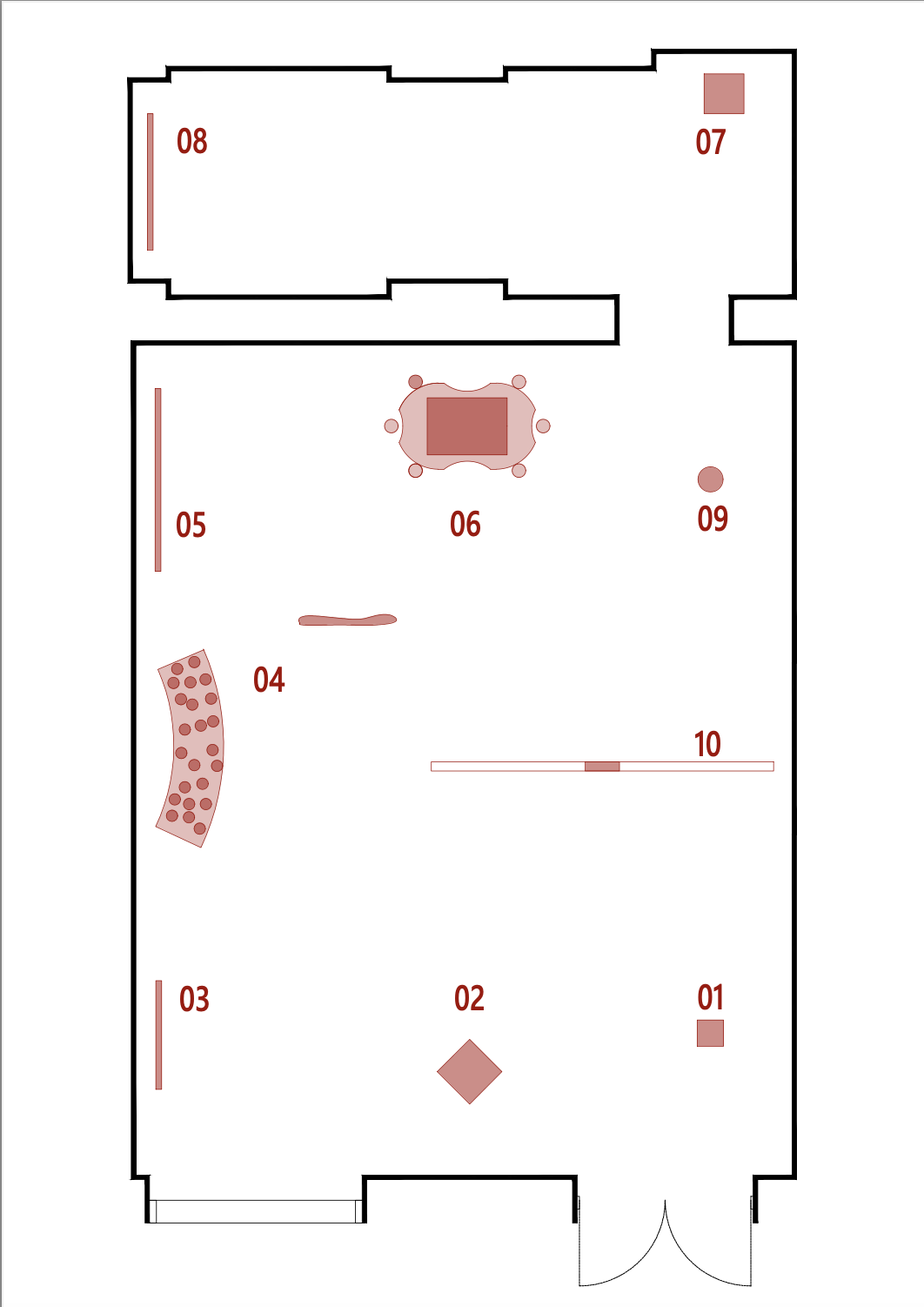
Artiști
Curator
